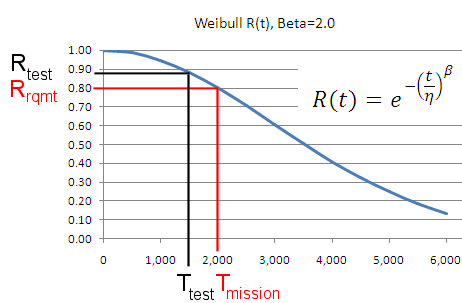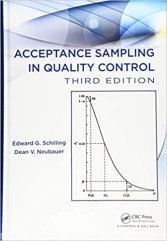1. How many test samples are required to demonstrate 95% reliability at a 95% confidence level?
2. How much test time is needed to demonstrate 90% reliability at a 90% confidence level?
3. Given some amount of available test time, how many test samples are needed to demonstrate 80% reliability at an 80% confidence level?
Option 1 above uses a non-parametric test approach, while options 2 and 3 assume a Weibull distribution to relate reliability to test time, which is termed a parametric binomial reliability demonstration test.
Method 1 (non-parametric test). This tool calculates test sample size required to demonstrate a reliability value at a given confidence level. The calculation is based on the following binomial equation:

where:
C is the test confidence level
R is the reliability to be demonstrated
f is the number of allowable test failures
n is the test sample size
Given inputs of C, R and f, this tool solves the above equation for sample size, n.
Method 2 (parametric test). Method 2 makes use of the Weibull distribution to define the reliability (R) in the the above binomial equation. Given a reliability requirement Rrqmt for a mission time Tmission and a value for the Weibull shape parameter β, the Weibull reliability function is solved for characteristic life (η). This fully defines the Weibull reliability function and allows for the calculation of reliability at any other point on the curve below. Rtest associated with some available test time Ttest is then calculated and used in the above binomial equation to calculate the number of test samples needed. Threfore, demonstrating Rtest at time Ttest is equivalent to demonstrating Rrqmt, provided that the estimate of β is accurate. Method 2A solves for required sample size. Conversely, given a fixed number of samples, Method 2B solves for test time required.
.





